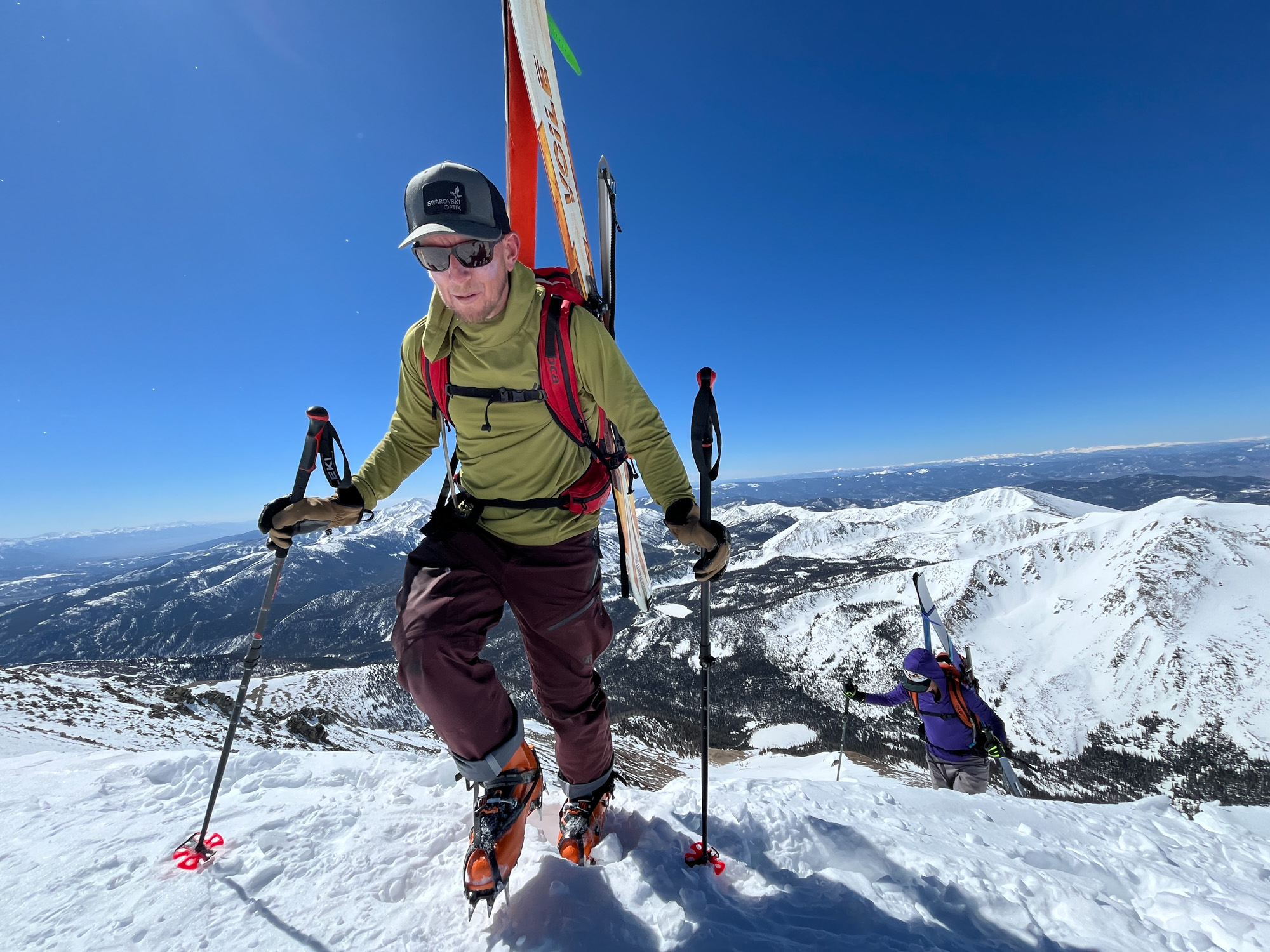Chasing powder beyond the ropes starts with the right boots. The best backcountry ski boots drive every climb, power each descent, and can make or break a big day in the mountains.
Lead tester Ryan Kempfer, a ski tech and boot fitter who logs over 100 ski days a year, teamed up with backcountry powderhound and editor, Chris Kassar, to test a range of boots in the Tetons, Colorado Rockies, and beyond. From steep couloirs to mellow glades, we evaluated comfort, weight, warmth, uphill efficiency, and downhill performance to find the best backcountry ski boots.
Whether you’re after a do-it-all performer like the Scarpa Maestrale, a women’s-specific favorite like the Scarpa Gea, or a budget-friendly workhorse like the Roxa R3 130 TI I.R., we’ve got you covered.
Editor’s Note: We updated this guide on August 25, 2025, adding the versatile Scarpa Gea, a top women’s performer, and the lightweight powerhouse La Sportiva Kilo. We also introduced detailed rating attributes for every backcountry ski boot we tested, making it easier to compare models and choose the best fit for your needs.
The Best Backcountry Ski Boots of 2025
Top Picks
Best Overall Backcountry Ski Boots
9.8/10 Rating
Best Overall Women’s Backcountry Ski Boots
9.8/10 Rating
Best Budget Backcountry Ski Boots
7.2/10 Rating
Best Lightweight Backcountry Ski Boots
9.1/10 Rating
Most Versatile Backcountry Ski Boots
8.5/10 Rating
See more picks
Best Overall Backcountry Ski Boots
-
Ultimate balance between uphill performance and downhill power -
Innovative redesign features -
Eco-friendly -
All-day comfort -
Intuition liner for added warmth and comfort
-
Not enough change and range of motion in the walk mode
Best Overall Women’s Backcountry Ski Boots
-
Lightweight build makes long tours and big approaches manageable -
Smooth 60-degree walk mode feels natural on the skin track -
Supportive, customizable Intuition liner -
Secure closure system with fewer buckles to fiddle with
-
Not stiff enough for super heavy hard chargers (choose the RS) -
Liner packs out quickly with heavy use
Best Budget Backcountry Ski Boots
-
Lightweight and high performance -
High-quality Intuition liner -
Heel lock buckle
-
Limited range of motion hindered performance -
Dual tongue means lots of plastic moving around vigorously in cold temps
Best Lightweight Backcountry Ski Boots
-
Ultimate range of motion -
Roomy toe box comfortable for most -
Hold heat well for their weight -
Extremely adjustable fit
-
Lightweight shell can be too soft for that bigger, aggressive skier
Most Versatile Backcountry Ski Boots
-
Comfortable yet aggressive -
Easy to operate ski-walk mode -
Ability to adjust the lean on the fly -
Fits wider feet
-
Doesn’t work well for narrow feet
Other Backcountry Boots We Tested
-
Lightweight shell yet awesome downhill performance -
Efficient uphill performance -
Simple, fast one-buckle BOA -
Vibram sole adds rigidity and grip for hiking & boot packing
-
Traditional narrow toebox (see your boot fitter) -
Not a hard charging downhill boot
-
BOA fit system offers precise adjustment -
Heat-moldable liner, shell and cufff -
Compatible with most bindings
-
Heavy for touring -
Even though the liner has cushion, it did not offer much warmth -
Expensive -
Need to flex hard in walk/tour mode
-
Extremely high performance on the downhill -
Warm and comfortable -
Versatile -
Micro-adjustable buckles and features allow for precise fit
-
Overall height of boot may catch shorter skiers in the back of calf
-
Lightweight feel -
Powerful enough to drive any touring skis -
Comfortable and punchable -
Improved fit
-
Outdated 4-buckle design -
Thin liner means cold feet quickly -
Limited range of motion in walk mode
-
Super lightweight -
Class leading walk mode and touring range of motion -
Smooth, predictable flex -
Medium/low volume fit adds to control
-
Not the most torsionally stiff
Backcountry Ski Boots Comparison Chart
| Backcountry Ski Boots | Price | Weight (per pair) | Last | Flex | Binding Compatibility | Best For |
|---|---|---|---|---|---|---|
| Scarpa Maestrale | $850 | 2,800 g | 102 mm | 110 | Tech, Alpine | One boot to do-it-all, all-day missions, everyday skier looking for a boot that performs in all areas. |
| Scarpa Gea | $799 | 2480 g | 102 | 100 | Tech, Alpine | The everyday backcountry skier who wants one boot to handle it all — from long tours to daily laps |
| Roxa R3 130 TI I.R. | $750 | 3,160 g | 99-101 mm | 130 | Tech, Alpine | Backcountry touring with a downhill focus, a quiver-of-one boot for a mix of touring and resort skiing |
| Dynafit TLT X | $800 | 2,150 g | 101 mm | Not reported | Tech | Longer tours, light and fast missions, multiple short laps, skiers who want a balance between uphill and downhill performance. |
| Atomic Backland XTD Carbon | $1,100 | 2,760 g | 100 mm | 120/115 | Tech, Alpine | Almost anything: packing on the miles, short and fast laps, big mountain objectives; skiers with wide feet |
| Scarpa F1 LT | $950 | 1,980 g | 100 mm | 100 | Tech only | Packing on the miles, longer ascents, multiple fast and short hot laps |
| Atomic Hawx Prime XTD 130 | $1,050 | 4,030 g | 100 mm | 130 | Tech, Alpine | Skiers who prioritize downhill performance, lift or snowmobile-accessed skiing with some touring thrown in, one lap at the resort before riding lifts for the day |
| K2 Mindbender 140 BOA | $950 | 3,632 g | 97-100 mm | 140 | Tech, Alpine | Expert-level, hard-charging, hybrid use (a mix or in and out-of-bounds), shorter tours, skiers who prioritize downhill performance and comfort |
| Tecnica Zero G Tour Pro | $900 | 2,560 g | 9 9mm | 139 | Tech, Alpine | Longer tours, the experienced skier who likes lightweight traditional fitting ski boots, ski mountaineering |
| La Sportiva Kilo | $799 | 2,282 g | 100.5 | 110 | Tech | One boot to do-it-all, all-day missions, an everyday skier looking for a boot that performs in all areas. |
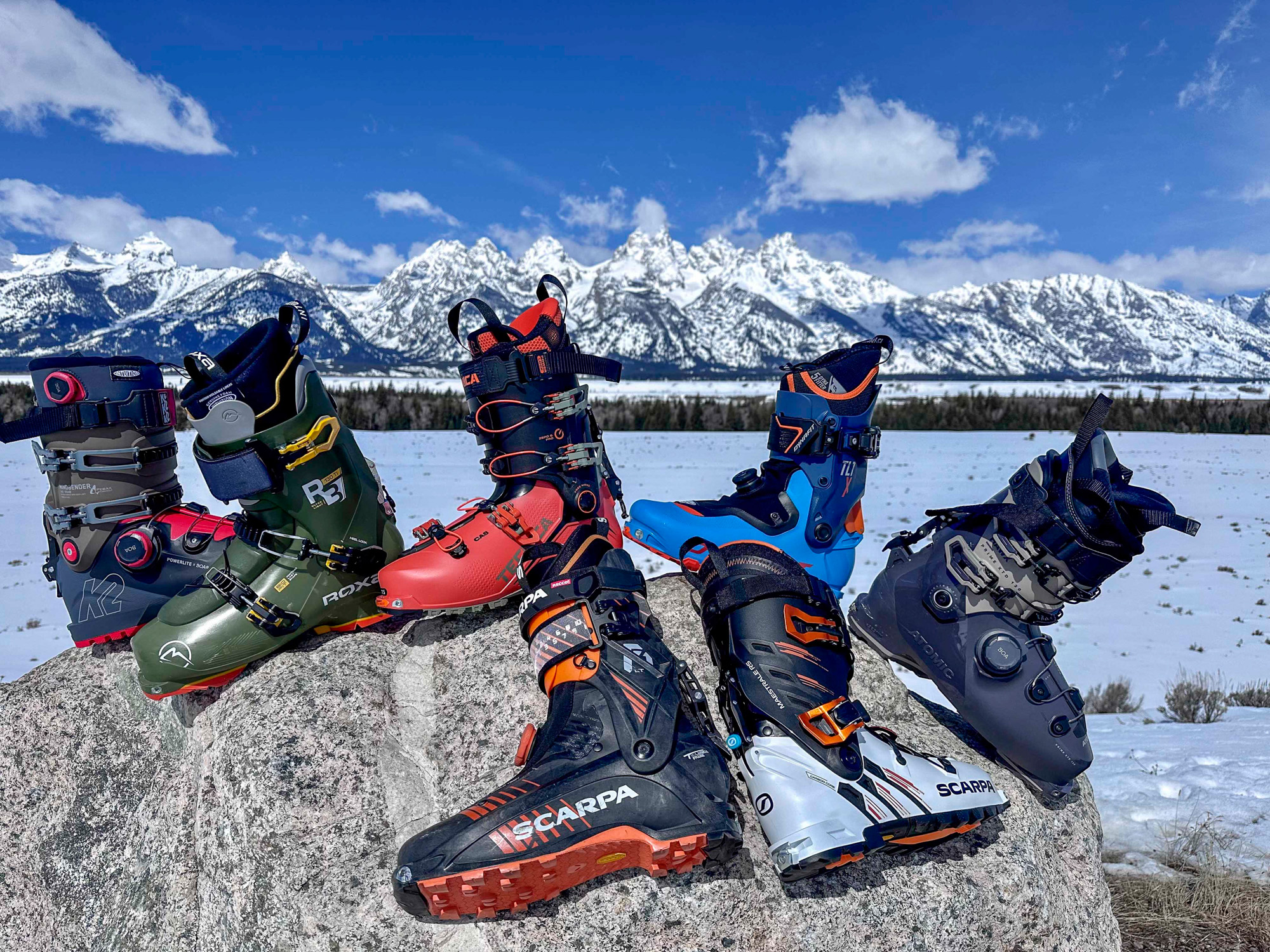
How We Tested the Best Backcountry Ski Boots
As backcountry addicts ourselves, we completely understand the varied demands of backcountry skiing. We also know that your boots are perhaps the most important piece of gear (other than your avi and safety gear) you’ll take with you.
If they don’t fit or perform well, an epic pow day can turn into a terrible one pretty fast. We put in months and months of time in the best backcountry ski boots on the market, so you don’t have to. Our recommendations take out the guesswork so you can get on the snow faster and with less effort.
Our Expert Testers
At 18, Ryan Kempfer moved from Wisconsin to Steamboat Springs, where the mountains and skiing captured his heart. Since then, the places he’s traveled, from Grand Teton to Great Sand Dunes National Park and many spots in between, have brought great adventures on skis, bikes, and by foot.
For over 2 decades, Ryan worked in the ski industry, first working his way up to a base services manager at a ski resort and then as a boot fitter and a ski tech in a backcountry-focused ski shop where he helped people find the perfect gear for their adventures. He prided himself on dialing in the balance between comfort and performance so that people could enjoy their adventures all the more.
Now, he works as a wildlife guide in Grand Teton and Yellowstone National Parks. But when he’s not out guiding or writing about the latest outdoor gear, he’s out using it. He skis over 100 days yearly, mainly in the backcountry, so he knows what works and what doesn’t. And, he loves hucking off rocks, dropping into steep couloirs, and pushing his limits by skiing hard.
Editor Chris Kassar, a backcountry skier who first started on telemark gear over 20 years ago and reluctantly (but gratefully) transitioned to AT 4 years ago, also assisted in testing. She, however, is a bit more of a tentative skier who really loves the uphill part and appreciates powder days and mellow slopes.
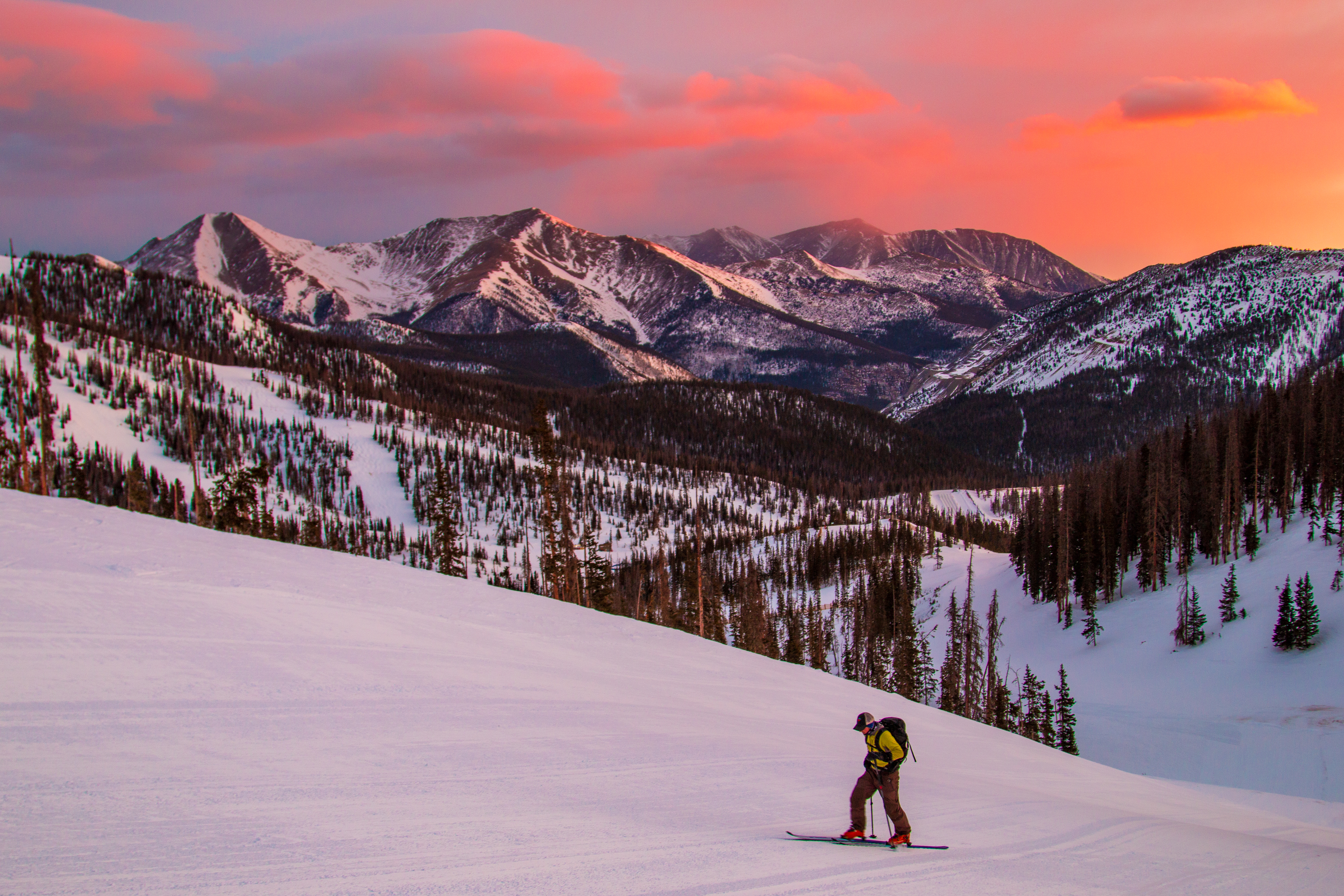

Our Testing Grounds & Process
We put these boots through real-world tests on every type of terrain and in all conditions — from dust-on-crust to three feet of powder, from steep couloirs in the Tetons to mellow glades in the Rockies. They carried us on steep dawn patrols at Monarch and Snow King, long tours and hut trips in Colorado, and summit pushes in the Sawatch Range. We also skied lifts at Jackson Hole, Snow King, and Monarch to get repeated downhill laps in varied terrain.
Because so many skiers want one boot to do it all, we made sure to test crossover models on both resort laps and backcountry tours. We evaluated comfort, weight, warmth, ease of use, and, of course, uphill touring performance and downhill skiing performance. We also considered the type of skier and conditions each boot best suits. To start, we tested every pair straight out of the box without modifications like custom footbeds or bootfitting, but we’ll continue long-term testing with adjustments. (We recommend working with a local bootfitter to get the best fit for your feet.)
Fit and comfort were critical factors. We considered ease of entry, adjustability, liner quality, padding, and insulation during long days in temperatures ranging from -20°F in January to warm spring corn laps. We also pushed durability, paying attention to wear and tear, buckles, walk/ski mechanisms, range of motion for touring, and stiffness for downhill control.
Once you find the ideal boot for your needs, be sure to consult our guides to the best backcountry ski bindings, and best backcountry skis to round out your setup. You’ll also want to check out our guides to the best avalanche beacons and best climbing skins.
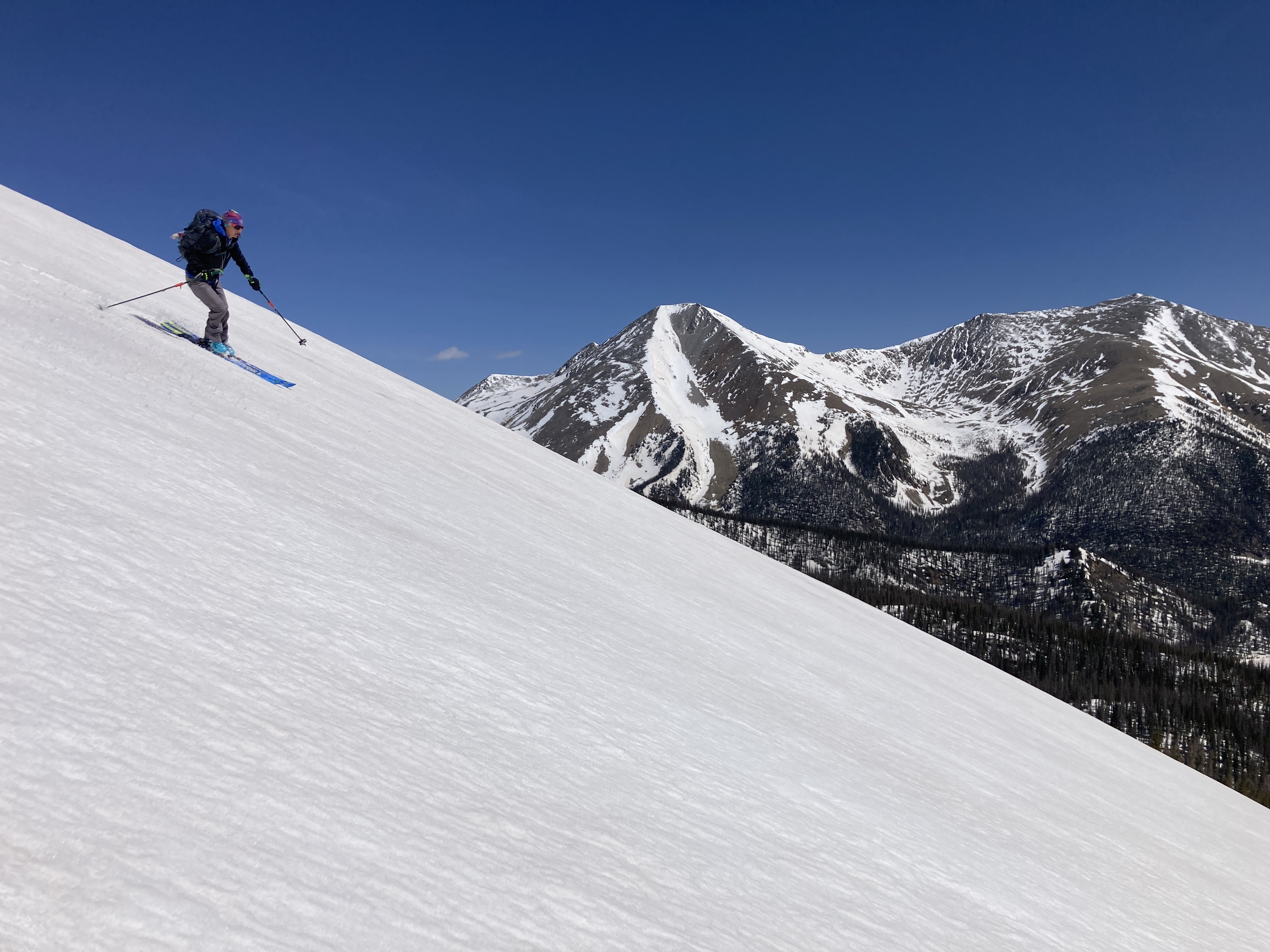

Our Backcountry Boot Rating System
We rate each boot across four main categories to show how it performs where it matters most. Every boot involves compromises. Lightweight models shine on the skintrack but often give up stiffness and warmth, while stiffer, heavier boots feel bomber on the descent but can punish you on big climbs.
Uphill Performance measures how smoothly and efficiently a boot climbs, from skintrack glide to range of motion on steep ascents. Downhill Performance reflects how much power, stability, and control a boot delivers once you point your skis down. Comfort/Fit accounts for warmth, liner quality, and how well a boot works for long days without hotspots or pain. Weight considers both the actual grams on the scale and how heavy the boot feels after thousands of steps.
Note: The Overall Performance score is not an average of these numbers. Instead, it reflects how well a boot balances its strengths and weaknesses in real-world backcountry skiing.
Buyer’s Guide: How to Choose the Best Backcountry Ski Boots
Choosing what to wear on your feet all winter long is incredibly important. We prioritize comfort, fit, priorities, performance, warmth, and weight for backcountry ski boots.
Comfort and Fit
Focusing more on performance or the latest advancements can be tempting when choosing a backcountry ski boot. However, we believe that finding a boot that fits your foot well is most important. Because if the latest and greatest boot doesn’t work for your specific foot, none of the features or technology that come with that boot will benefit you. And, if you’re in pain, you won’t enjoy all the reasons (time out in nature exploring with friends, untracked pow turns, etc.) that make backcountry skiing so special.
Try on a variety of boots. If you don’t know where to start, consider “last” or toebox width. We tested everything from 99mm to 104mm lasts. If you have a wide foot (D or higher), start with a 100mm last or higher, like the Atomic Backland XTD Carbon, Fischer Travers CS, or K2 Mindbender. If you have a narrow foot, start with a 100mm last or lower, like the Tecnica Zero G.
Hit up a local shop with experienced staff who can help find the right boot for you (and who can help you dial in the perfect fit). Demo days at your local mountain are also an awesome way to try a variety of boots. Or, you can always rent a couple of different pairs of boots to see what works best for you.
No matter where you end up buying your boots — online or at a shop — you’ll always want to go back to a local ski shop with a master boot fitter who can get you the right footbeds, can heat mold your liner if needed, and make any other custom tweaks to customize your boot for your foot.
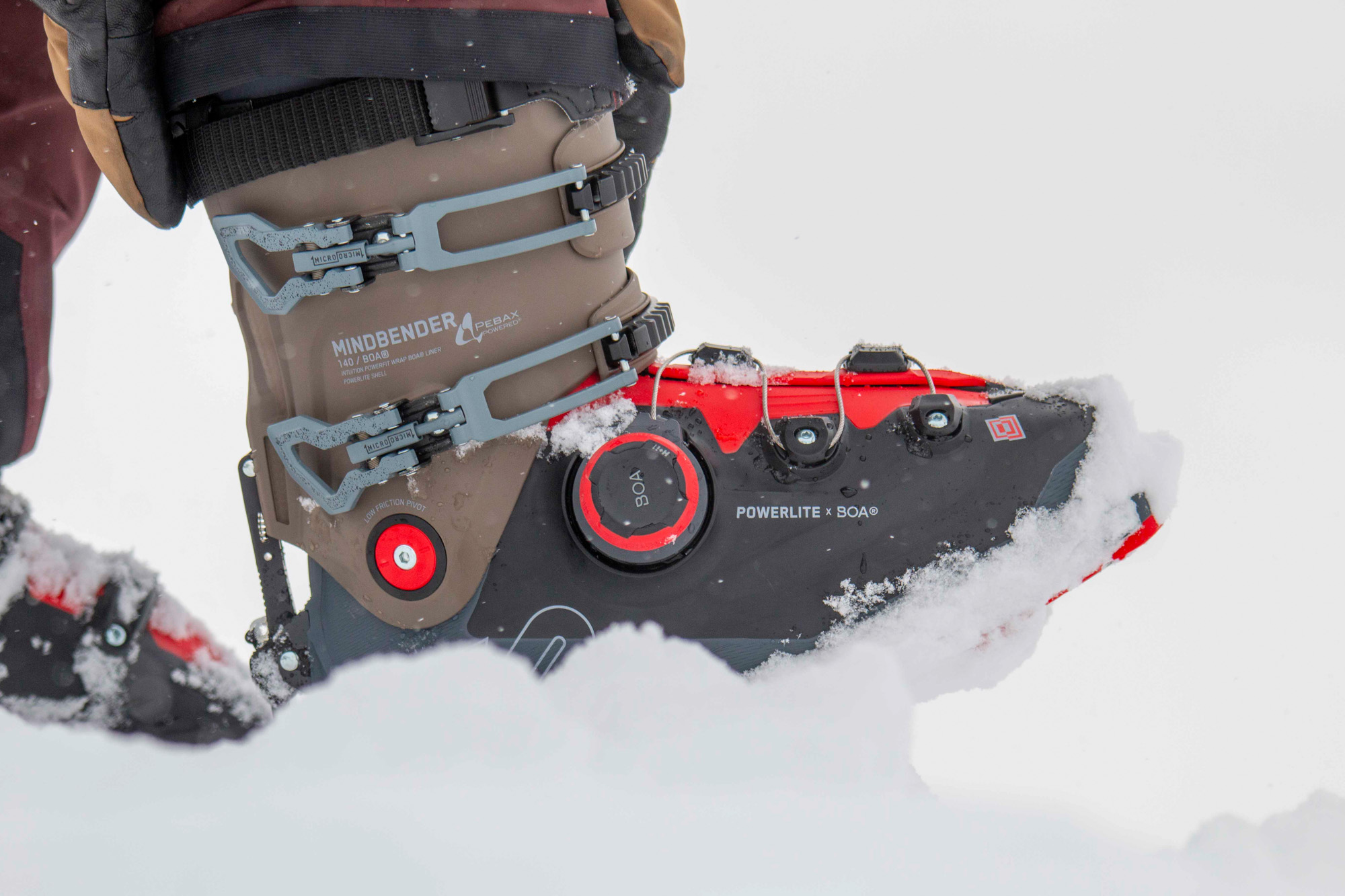

Type of Boots
What type of backcountry skier are you? Are you a casual skier who goes out a couple of days a year or are you in the skin track almost every day from November to June?
Do you tackle high peaks on all-day endeavors, or are you more into fast and light dawn patrol adventures? Or, do you prefer a quick skin lap at the resort before skiing lifts all day? The answers to these questions will determine the best backcountry ski boot for you.
True Backcountry Boots
If backcountry skiing dominates your winter, you’ll want a true backcountry ski boot like the Scarpa Maestrale, Atomic Backland XTD Carbon, or Fischer Travers CS that hits the sweet spot and balances almost all the qualities (fit, comfort, uphill and downhill performance, warmth) of a high-quality boot.
This is especially true if you enjoy a range of backcountry adventures, from all-day tours up peaks to hot laps at your local mountain and everything in between. If you’re more of a fast and light skier who doesn’t need the comfort and warmth of the Maestrale, the Dynafit TLT X, Scarpa F1 LT, or Tecnica Zero G Pro might be ideal for you as long as they fit your feet well.
Crossover or Hybrid Boots
However, if you dabble in the backcountry (or sidecountry/aka hike-to or skin-to terrain) but also want your boot to crush for a full day of lift riding, then you’ll want more of a crossover or hybrid boot like the K2 Mindbender or the Roxa R3 130. One thing to consider is that flex (or stiffness) is important, but when it comes to backcountry skiing, it’s not just a numbers game.
Just because you ski aggressively and fast, doesn’t mean you need a flex of 140 to get the kind of performance you desire. We’ve found that boots with less flex still perform extremely well on the downhill while still allowing us to be comfortable and efficient on the uphill. Again, trying boots is really the best way to determine what works for you and your needs.
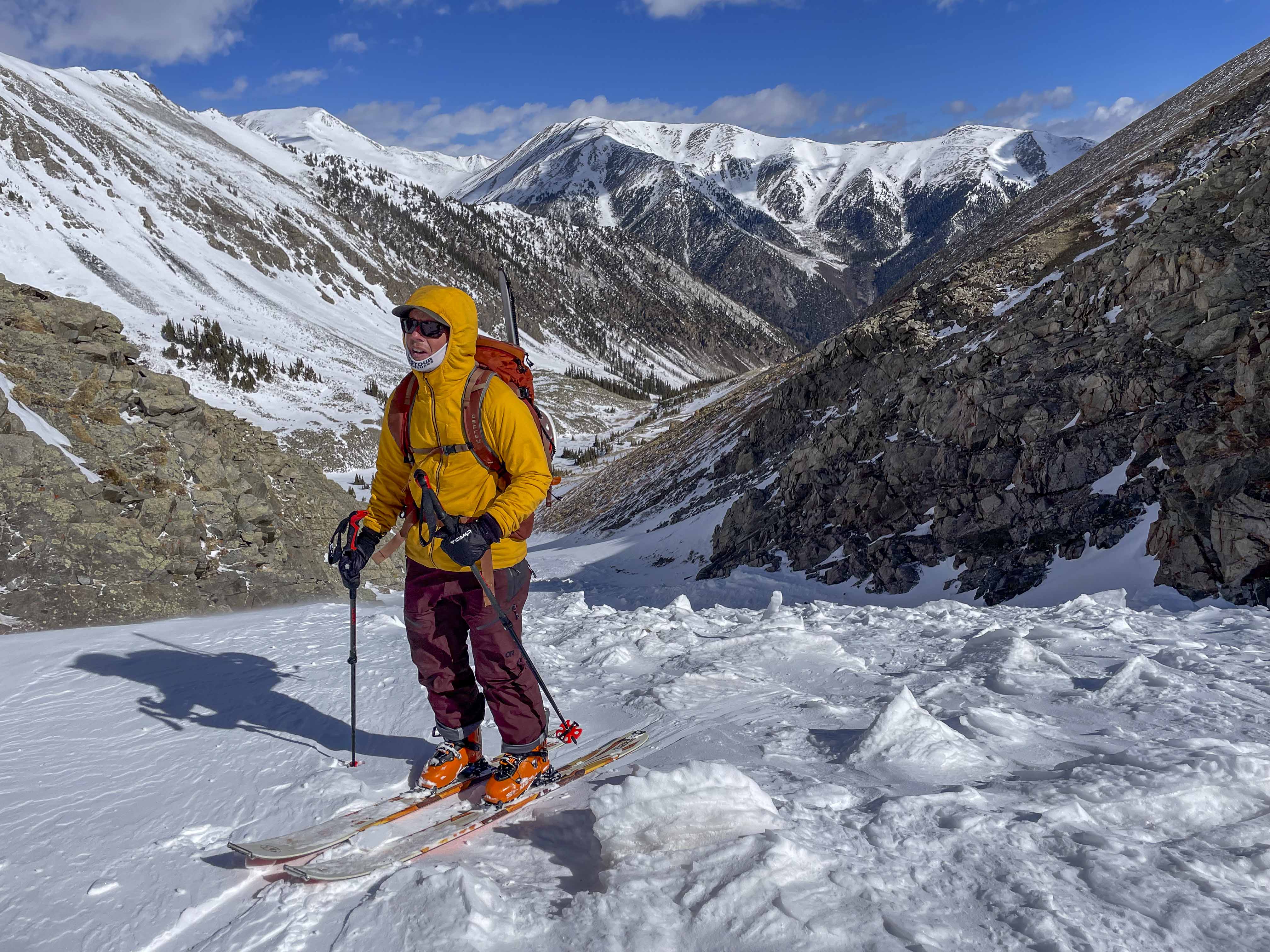

Uphill Touring Performance
There’s nothing like setting the skin track in a foot of freshies. Or, starting a frigid climb guided only by the glow of your headlamp. If you’re like us and love the uphill, you’ll want to ensure the boot you choose prioritizes climbing efficiency and comfort.
What does this look like? It looks like a lightweight boot that offers a wide range of motion so you can maximize each stride and move uphill with less effort. A wide range of motion and lighter boots also allow you to climb steeper terrain efficiently, adding longevity to your ski tour.
Another feature to consider when choosing a boot is how easy it is to transition from walk mode to ski mode and vice versa. Some mechanisms, like the one found on the TLT X, allow you to transition with one flick of a lever, while others require more time and effort.
If uphill skiing performance is a main objective, the Dynafit TLT X and the Scarpa F1 LT will allow you to enjoy the movement in your body and soul as you climb.
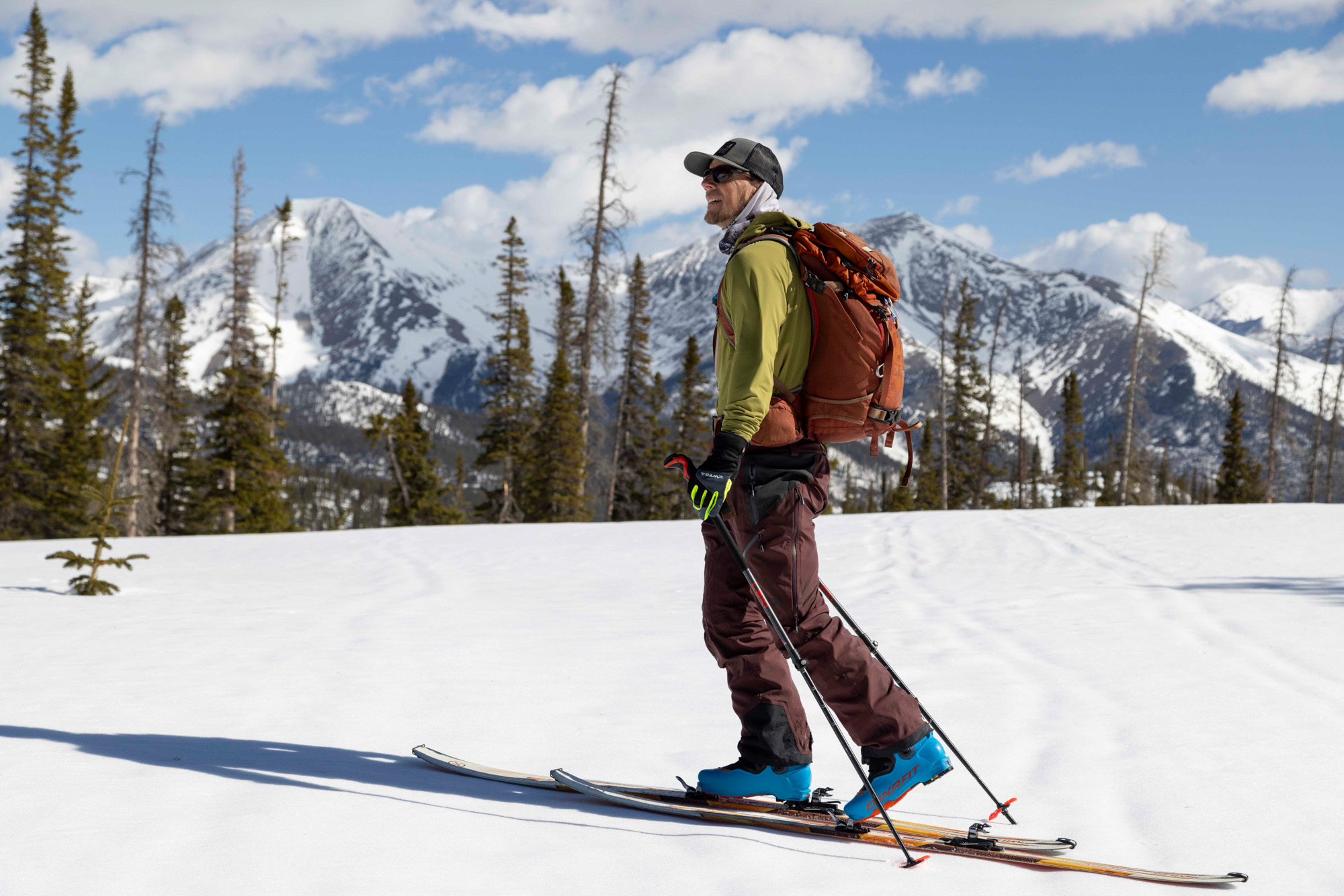

Downhill Skiing Performance
Skiing is the art of making turns on a white frozen canvas, leaving your signature as you enjoy face shots. To make that experience even more exhilarating, consider the downhill performance of all boots. Downhill-performance-oriented boots typically use stiffer and heavier plastic overall. Flex is a big factor, but it’s not all about numbers. It’s more about what works for you.
A stiff boot will give you better downhill performance by offering less flexibility and a much stiffer, tighter fit overall. This will most likely impact your uphill flow and overall comfort. Larger downhill boots allow the skier to drive the ski harder into each turn, allowing for quicker edge-to-edge movement.
While heavier and stiffer boots may limit freedom during uphill movement, consider the state-of-the-art design of our budget pick, the Roxa R3 130. This is a stiffer downhill boot that also allows for efficient uphill movement. Alternatively, a ski boot like the Atomic Hawx Prime XTD 130 offers power, stiffness, and comfort in a high-performance downhill boot. This will be ideal for shorter tours or exploring the off-piste areas at your resort.
Note on Performance
With backcountry gear, including boots, there is always some sort of compromise. If a boot performs extremely well on the downhill, it often doesn’t do as well on the uphill.
However, some true backcountry boots, like the Fischer Travers CS, Atomic Backland XTD Carbon, and the Scarpa Maestrale come really close to balancing uphill and downhill performance, which is why they’re both award-winners. True backcountry boots will never have the same power to ski the way an alpine (aka meant for the resort) boot will, but these come pretty close and are a dream on the uphill.
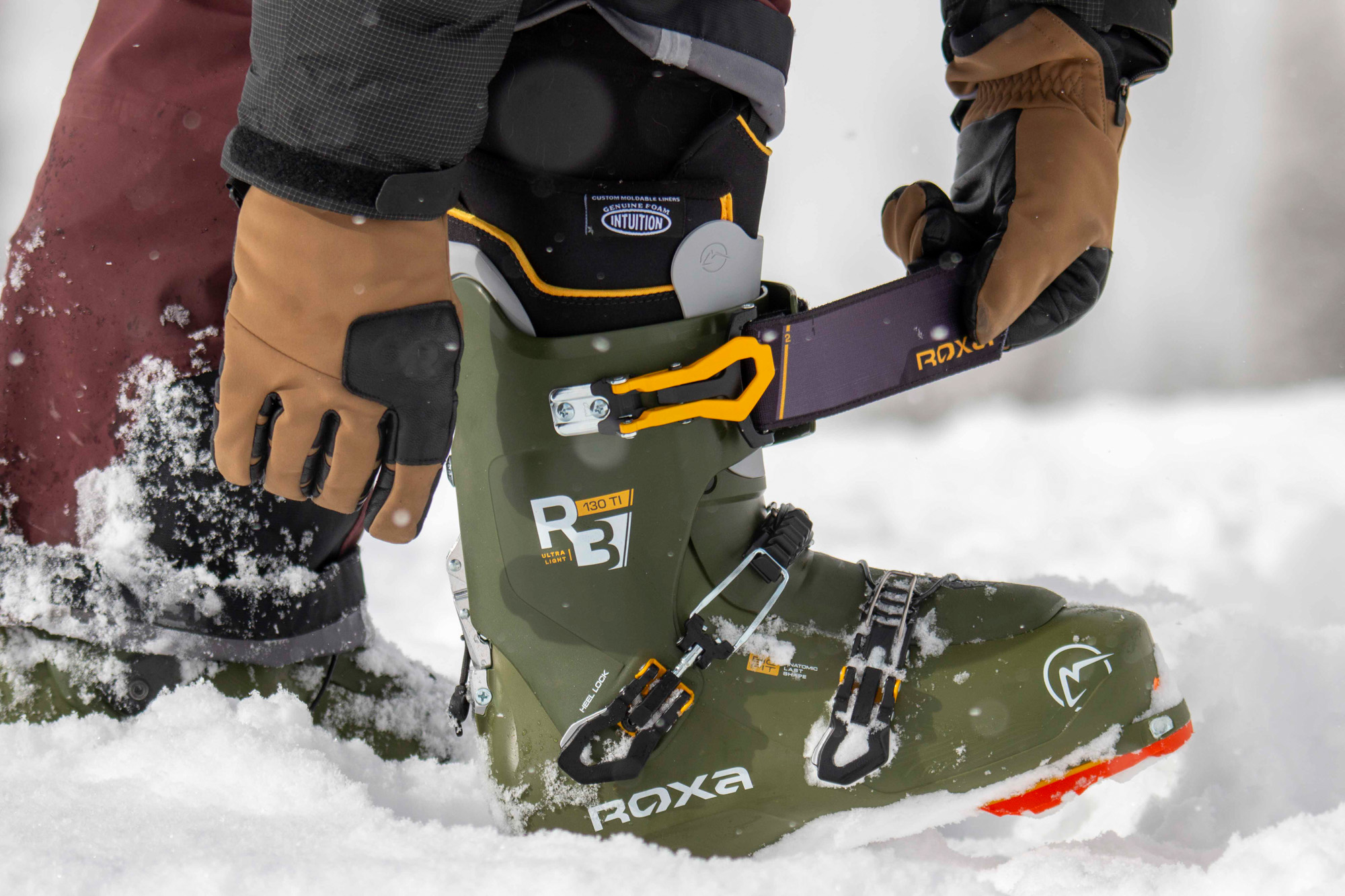

Weight
The weight of your boots plays a significant role in your overall performance and comfort, both on the ascent and descent. Generally, backcountry ski boots are designed to strike a balance between being lightweight for easier climbing and heavy enough to provide support and power transfer for safe and controlled descents.
The ideal weight for backcountry ski boots varies depending on personal preference and the specific type of backcountry skiing you plan to do. For those focused on light and fast missions, where speed and efficiency are paramount, a lighter boot, like the Tecnica Zero G Tour Pro and the TLT X from Dynafit can be a game-changer.
These boots typically have a minimalist design, with less material and simpler mechanisms that reduce weight without sacrificing the essential functionality needed for climbing and skiing. However, they are typically not as warm as others.
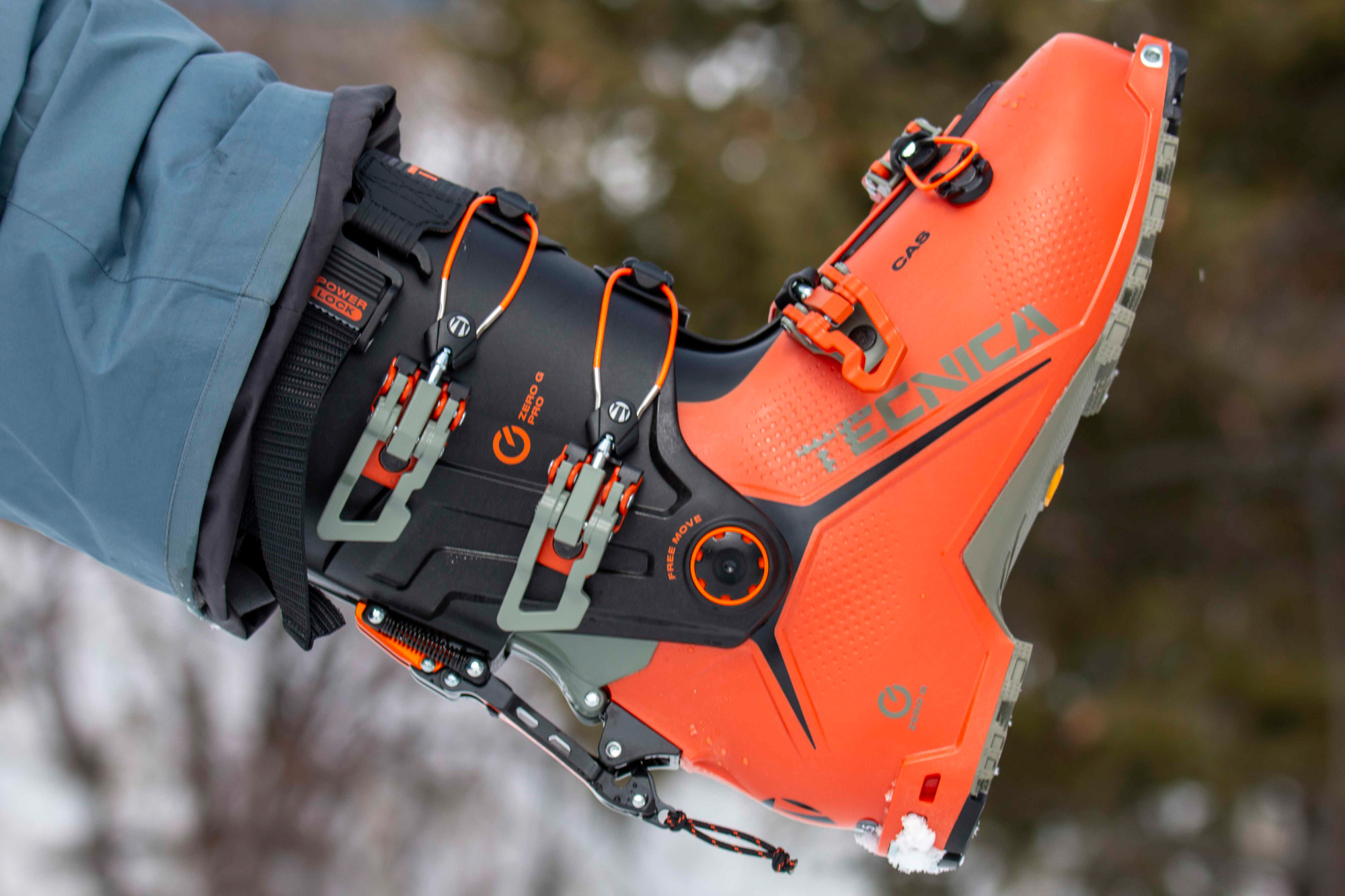

For skiers who prioritize downhill performance and may tackle more aggressive terrain, a heavier boot may be more appropriate. These boots are constructed to offer more support, durability, and power during descents so you can drive your skis where you want them to go.
Although this may add weight, advancements in materials and design have allowed manufacturers to create boots that are both strong and relatively light, offering a compromise between uphill efficiency and downhill capability.
The weight of a ski boot directly affects your endurance and energy expenditure. However, the lightest boot might not always be the best choice. The construction, fit, and features of the boot, such as the range of motion in walk mode and the boot’s stiffness (flex), play crucial roles in overall performance and comfort.
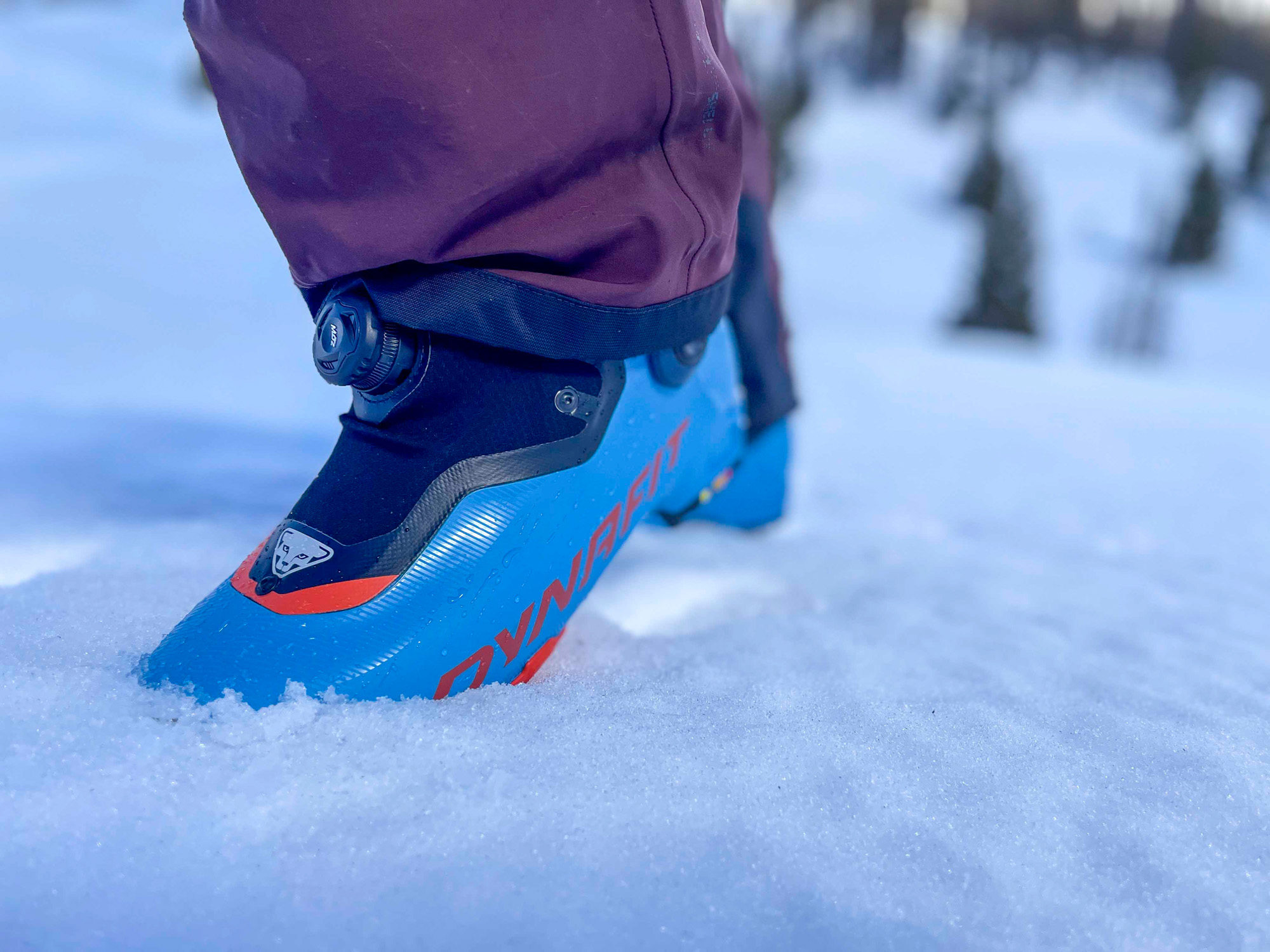

Warmth
We don’t know about you, but once our feet get cold while we’re out skiing, the fun ends – immediately, regardless of how long we have left on our adventure. Pay attention to the liner that comes with your boot and replace it with a better one needed. The warmest and most durable liners are made of closed-cell foam, which offers excellent heat retention.
If you can, buy a boot that comes with an Intuition Liner. They’re top-of-the-line game-changers in warmth, stiffness, and overall performance. The Scarpa Maestrale, Roxa R3, and K2 Mindbender come already equipped with Intuitions.
However, if the boot you choose doesn’t, you can often replace the stock liner with an Intuition. Check with your local boot fitter because some boots can not accommodate thicker (aka warmer) liners. A closed-cell foam liner also allows you to heat mold the liner for another custom fit opportunity.
Some boots that prioritize uphill performance, like the Tecnica Zero G Pro or the Fischer Travers CS weigh less than most but also offer a very thin liner, so you must be OK with sacrificing warmth and comfort to save weight.
Or, you’ll want to consult your local ski shop and bootfitter to look into replacing the liner if there’s room in the shell for a warmer one. Others, however, like the Dynafit TLT X, achieve the holy grail: a super lightweight boot with a relatively warm feel thanks to a high-end liner that retains heat well.
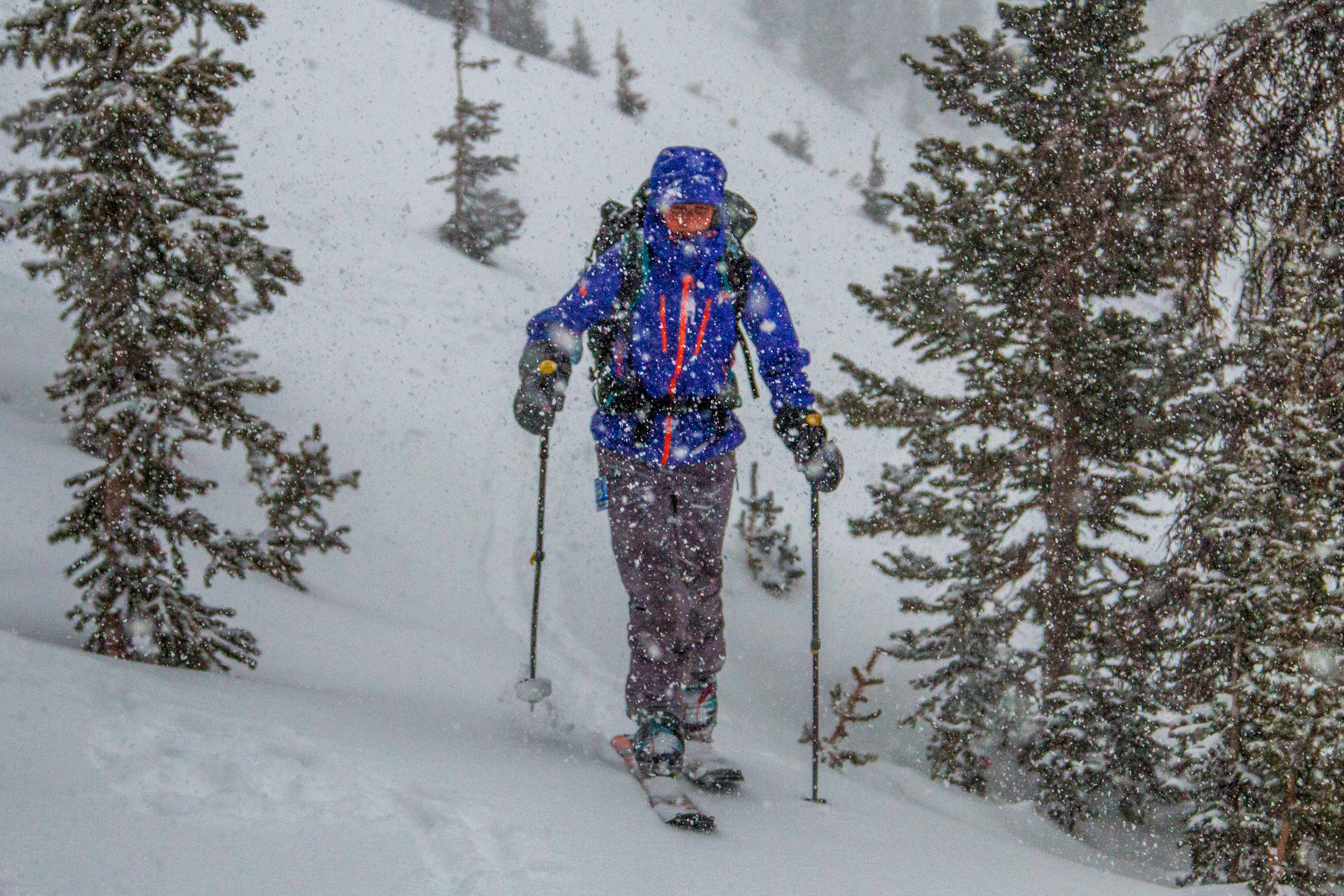

Price & Value
There isn’t a huge amount of variation when it comes to the price of backcountry ski boots. The ones tested range from $750 to $1,050. We found that price doesn’t necessarily reflect quality or number of features either. As we’ve mentioned a few times, the most important thing is finding a boot that works for you — your foot, style, and priorities.
All of these backcountry ski boots are a solid investment, but this is part of the ski quiver that you don’t want to skimp on because no matter what new ski or binding you choose if your feet hurt from your boot choice, everything else goes “downhill.”
Budget
Two of our top picks, the Roxa R3 ($750) and the Dynafit TLT X ($800), fall on the lower end of our price range, showing that more doesn’t always mean better. Our best budget pick, the Roxa, impresses us with its low price tag even more, given that it comes with an Intuition Liner (our fav!), is relatively lightweight (third on our list), and performs extremely well on almost all levels.
Frequently, in the outdoor world, a lighter-weight product will be pricier. However, the TLT X is the lightest on our list and one of the least expensive.
Note: We get that it may be laughable to deem a $750 or $800 product a “budget” option. However, this is the typical cost of backcountry ski boots at the moment. If you’re looking for a bargain, keep your eye out for sales or consider buying last year’s models in spring.
Mid-Tier
The majority of our options fall in this class, with prices between $850 and $950, including our best overall pick, the Scarpa Maestrale. Made of the highest-quality materials and boasting the Intuition Pro Flex Tour liner, which keeps its shape and cushioning longer than many, you can expect the Maestrale to last (depending on how often you ski, of course).
Plus, its eco-friendly materials, lightweight construction, and perfect performance on the up and down make it worth every penny. Our most versatile pick and one of our favorite boots, the Fischer Travers CS ($850), is a mid-tier option that outperforms most of the more expensive boots on both the up and the downhill.
The two other mid-tier options, the K2 Mindbender 140 Boa ($950) and the Tecnica Zero G Tour Pro ($900), had mixed reviews. However, we did notice that prices sometimes rise with stiffness or flex ratings due to the different materials and designs needed to make a stiffer boot.
Premium
The Atomic Backland XTD Carbon ($1,100) is the highest-priced boot in our guide due to its lightweight, but durable construction and its ability to perform at all levels in all conditions. Also up there in price, the Atomic Hawx Prime XTD 130 ($1,050) is a true crossover boot meant to shine at the resort and dabble in the backcountry. This price tag isn’t as shocking if you’re just buying one boot to do it all.
However, we aren’t sure why it comes in higher than the other crossover boots we tested. If you want a true backcountry boot, we’d recommend a lower-priced option designed to perform equally well on the up and the down.
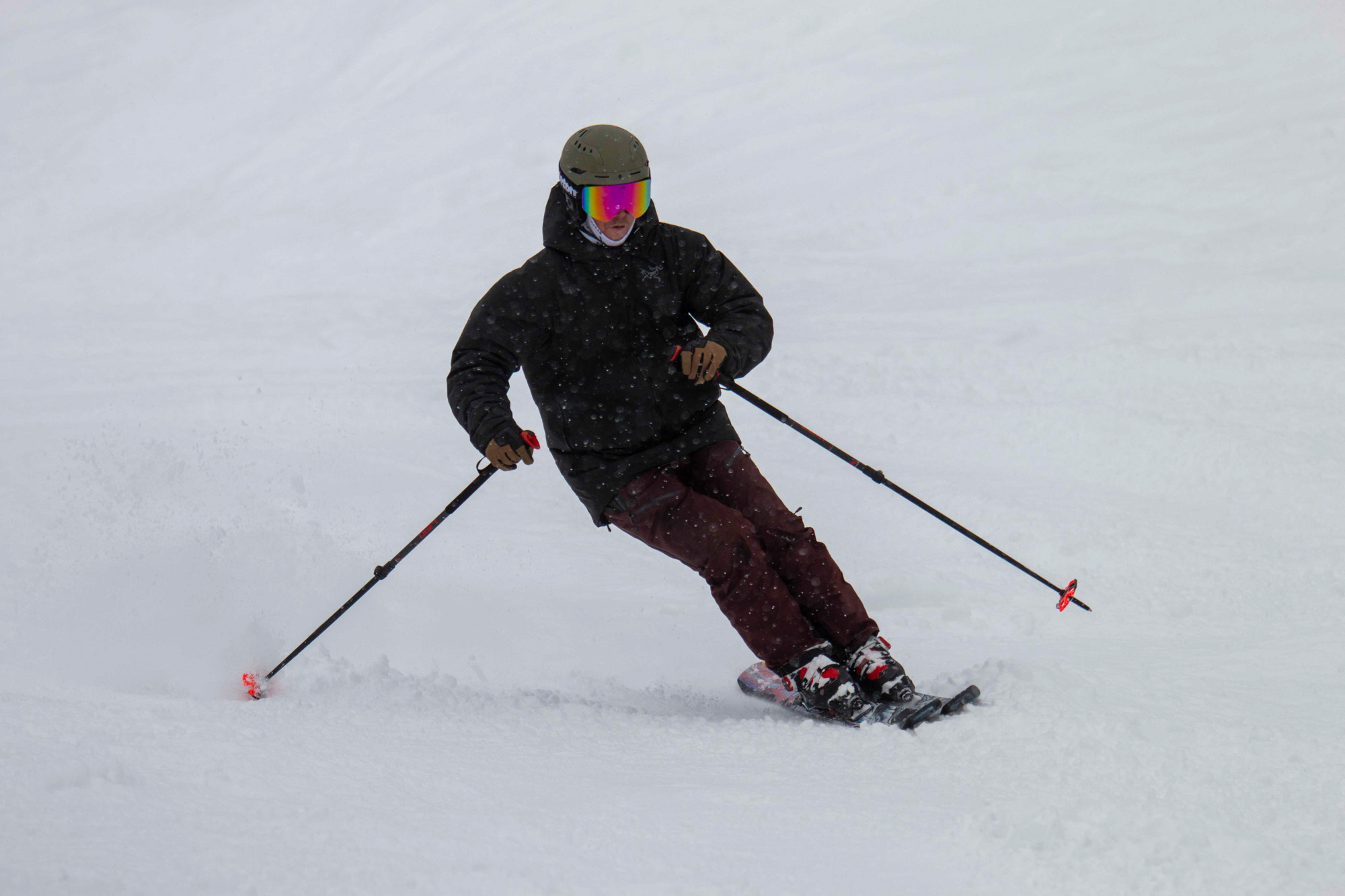

Frequently Asked Questions
Backcountry ski boots have two modes: one for touring (uphill) and one for downhill. They have a tour/walk mode that allows a wider range of motion and a more comfortable forward stride than traditional downhill ski boots. They also have a ski/downhill mode for those descents.
Nothing. These are terms used interchangeably.
Backcountry skiing, also known as off-piste skiing, includes skiing any sort of terrain that does not fall wihtin the boundaries of a patrolled ski area. It can involve skiing steep, remote bowls, couloirs, or high peaks, or can also include skiing mellow, low-angle glades and meadows.
It’s usually done with alpine touring or telemark gear, using climbing skins and bindings with a free heel so you can skin uphill and then lock your heel into ski down.
Cross-country skiing, also known as XC or Nordic skiing, is typically done on gently rolling landscapes. The skis are long and skinny. There are two primary styles of cross-country skiing: classic, which can be done on groomed nordic ski areas or ungroomed terrains like a road or open field, and skate skiing, which uses slightly shorter skis than classic and is always done on a groomed track.
In skate skiing, skiers propel themselves forward by kicking their skis out to the side, similar to ice skating. If you want to learn more, check out our guide to the Best Cross Country Skis.
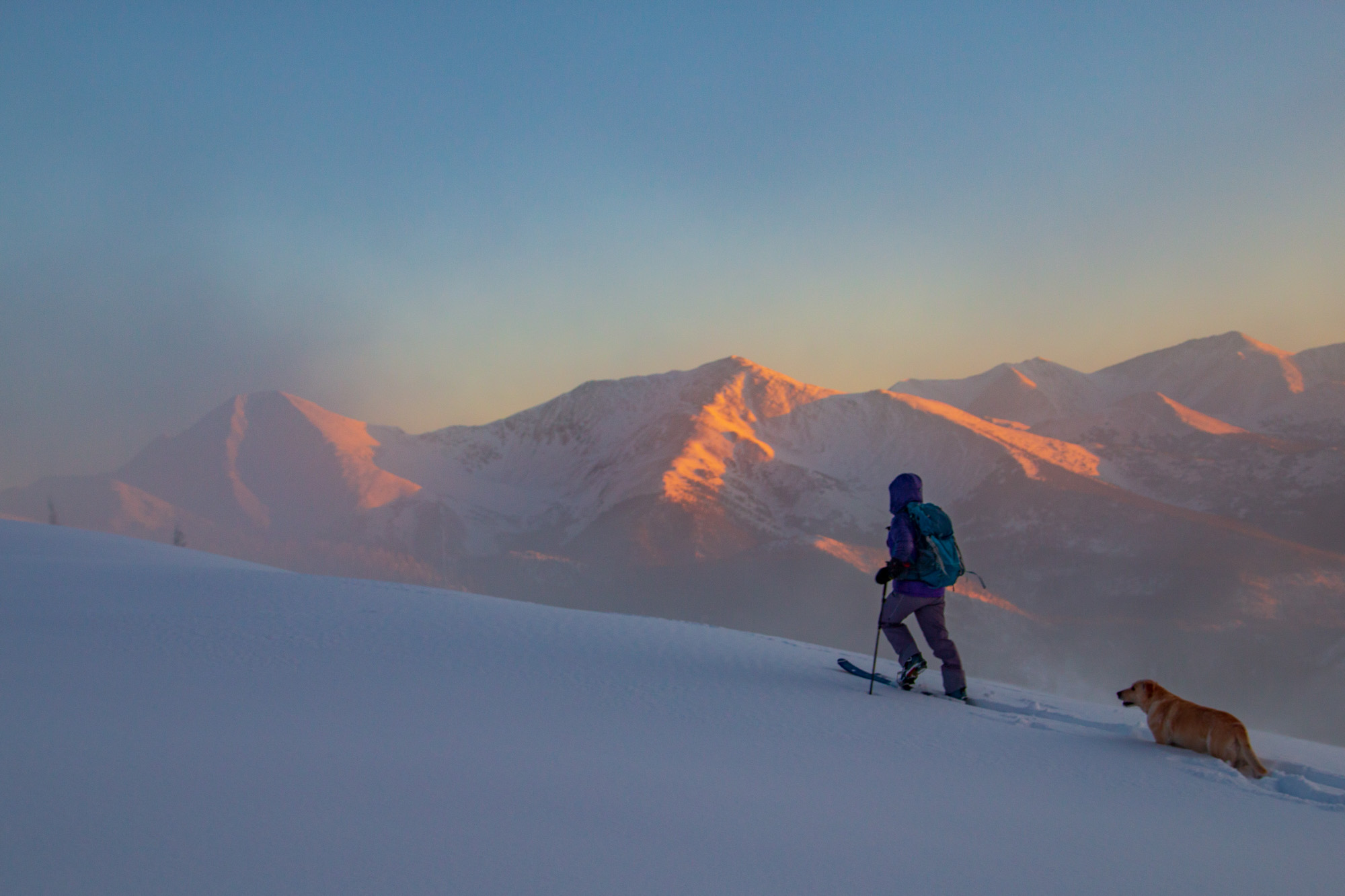

It depends on what kind of bindings and boots you have. There are a few common styles of bindings. Tech or pin bindings are designed to hold your boot in the ski by means of two pincers that fit into holes in the toe of your boot. The heel of the boot — in most cases — sits on two pin inserts. As a result, they release in a totally different fashion than traditional alpine bindings.
When in touring mode, your toe stays hooked in, but your heel comes free of the heelpiece, so you don’t end up lifting additional weight. The point where the toe pivots gives you optimal leverage when skinning, which also saves energy. Tech bindings require a boot with molded-in toe fittings and a slotted plate at the heel. If you have these bindings, you need a boot with these fittings.
Alpine bindings have two pieces and do not have a walk mechanism, therefore you can’t tour/travel uphill in them. Many alpine bindings will work with alpine touring and regular alpine ski boots. However, you will only be able to use them on the downhill. Frame bindings look like the normal downhill alpine binding everyone grew up with, except that they have a base plate underneath the bottom of your boot (like a riser).
When in “touring mode,” which is the mode you switch them to when you want to walk uphill, the heel of the binding lifts up off the ski with your boot, while the toe stays attached by a hinge. Because they’re basically just a normal binding, you don’t need special boots to use them.
Not all backcountry ski boots are compatible with all backcountry bindings (see above) so always check before you buy. If in doubt, ask an expert at a local ski shop.
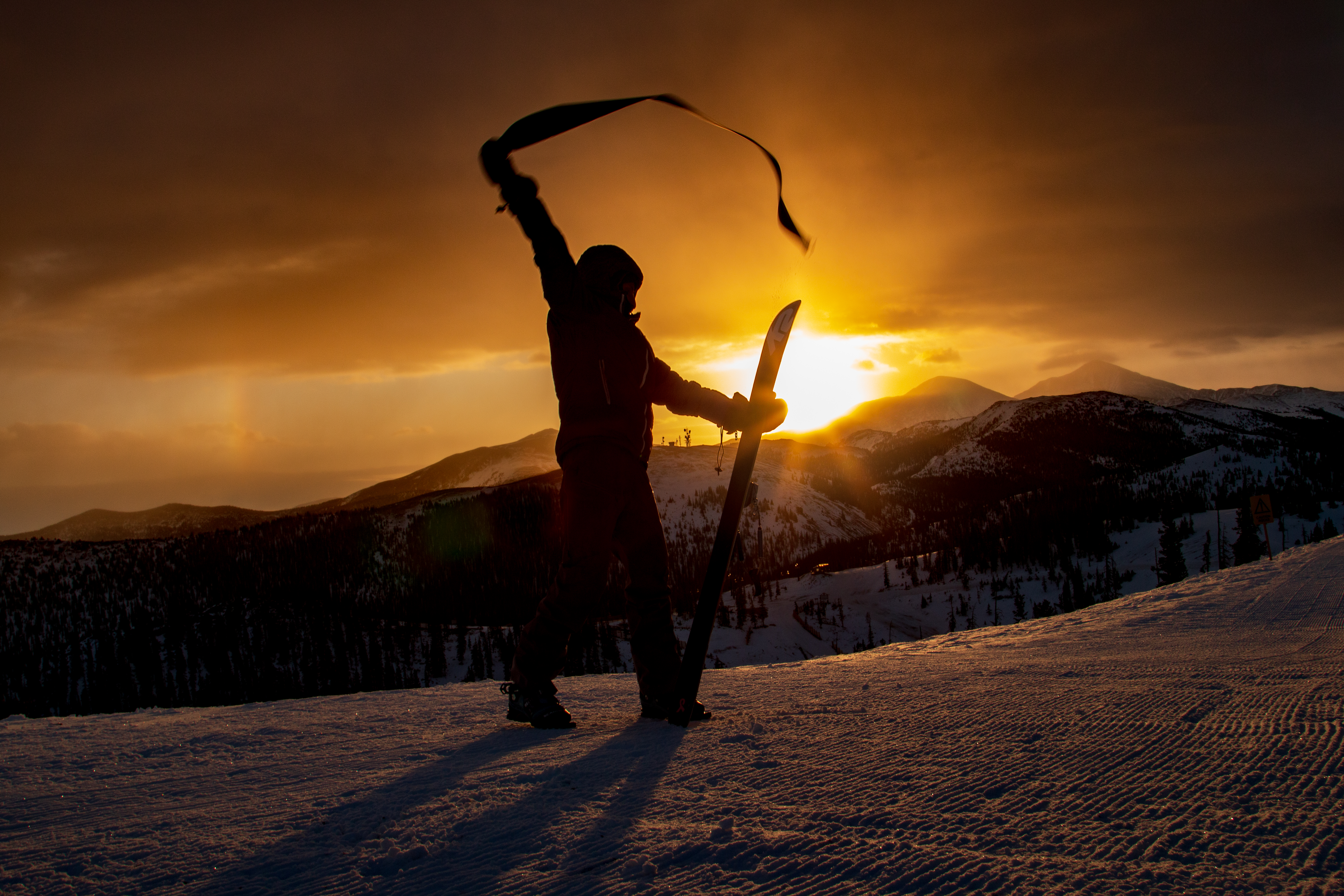

We tested the best climbing skins from Pomoca, Black Diamond, Contour, and more to help you find the best option for your needs and budget.
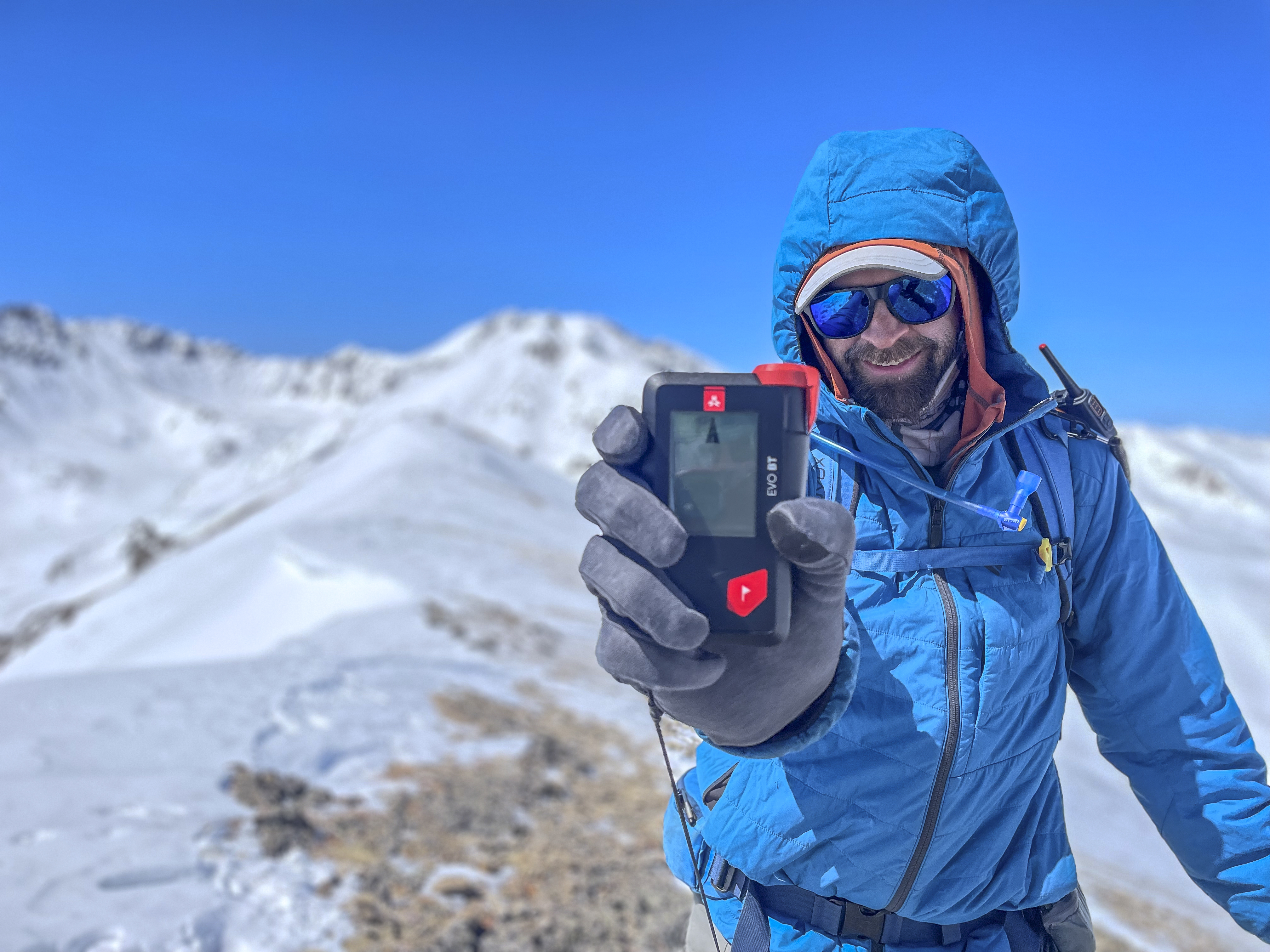

We tested the best avalanche beacons from Arva, Black Diamond, Mammut, BCA, and more to help you find the best option for your needs and budget.
Read the full article here




